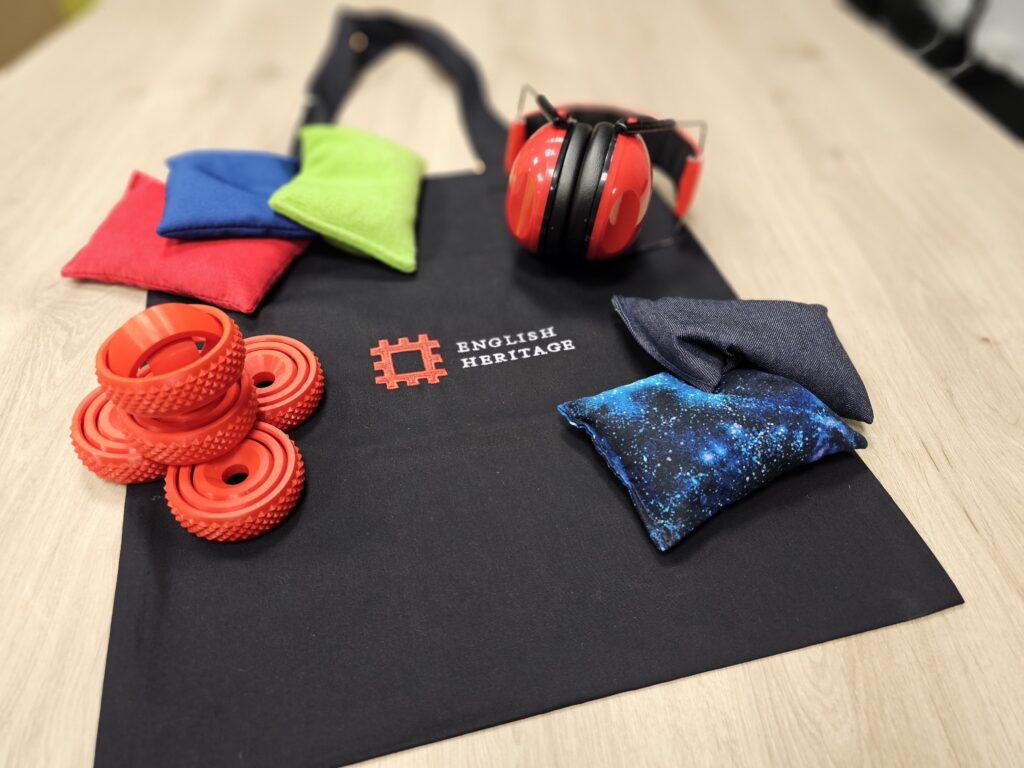
Adopted widely from education and play settings to workspaces, sensory bags are an inclusive, inexpensive method of signifying to visitors that your premises actively consider accessibility and comfort. The tools and resources available within the bag can ease or lessen situations of sensory overload, as well as aid in the management of high levels of anxiety and agitation that occur as a direct result of overstimulation.
Whether your site is open to the public consistently or generally accessed only by employees, sensory objects like fidget spinners, ear defenders, and bean bags are quickfire solutions to a multitude of specific requirements that disabled people on your site may require for their comfort and/or ability to work.
Groups that particularly benefit from objects often found in sensory bags are, naturally, people with sensory disabilities or disorders, including sensitivity to sound (misophonia, hyperacusis, chronic migraines), mental health conditions (anxiety disorder, mood disorder, dementia, post-traumatic stress disorder, and depression), and neurodivergent individuals (such as those with ADHD, autism, etc).
Direct Access has provided sensory bags with items such as these for many organisations, including the likes of English Heritage sites, such as Wroxeter Roman City.
For people who have sensory disabilities, simply providing items such as these can make the difference between visitors or employees being comfortable on your premises or being unable to cope with certain elements of the ambiance. Where quiet rooms and spaces are unable to be facilitated, for instance, providing ear defenders is a cost-effective alternative. And where play areas for children cannot be facilitated, fidget toys provide a tactile alternative.
Ear Defenders – These are great for disabled people of all ages with sensory process issues that make them sensitive to sound; even if your site is not particularly loud for a non-disabled person, the experience of particular types of sounds on your site might be uncomfortable for certain people. So having the capacity to provide ear defenders is always useful, regardless of whether noise levels on your premises are particularly high.
Bean Bags / Fidget Toys – Used as a form of pressure therapy, bean bags, and fidget toys allow people to control their responses to physical stimuli, which can help calm their nervous systems and reduce anxiety. For children, they are tactile and encourage touch exploration, making them a standard in many sensory bags. For adults, they help relax people in stressful or overstimulating environments.
Communication Cards – These are particularly useful in special education settings, clinics, and anywhere children are likely to be. When struggling to verbalise their needs, communication cards act as a useful stand-in for verbal expression – allowing adults to understand exactly how a child is feeling, and encouraging emotional expression.
Okay/Not Okay Bracelets – Another useful communication item, providing different types of silicone bracelets (which can be identified by colour and/or text) are handy for disabled people attempting to communicate their mental well-being at any given moment. As a bonus, they can be used to promote mental health awareness in the same way as a Hidden Disability sunflower lanyard to the world around the wearer.

With the capacity to 3D print items ourselves, including fidget toys and other sensory objects, our Accessible Media team can recommend items that would suit your particular environment by delivering an accessibility audit of your premises, helping you determine the right course of action on your journey to providing true inclusion.
Take a look at our Accessible Media services here;